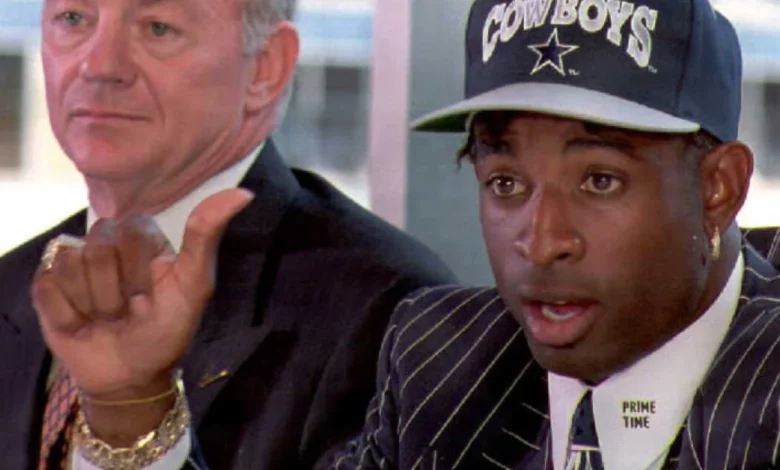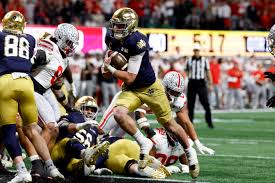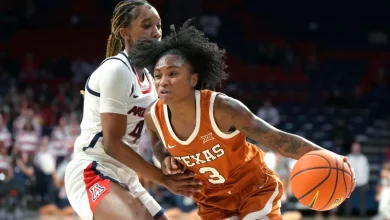The coaching hunt for the Dallas Cowboys demonstrates how little Jerry Jones values a head coach.

The Dallas Cowboys are one of the most iconic and storied franchises in NFL history, with a fanbase that spans the globe. Over the years, the team has garnered unparalleled attention, not just for its on-field success but for the larger-than-life persona of its owner, Jerry Jones. However, the Cowboys’ consistent failure to secure that elusive Super Bowl victory since the mid-1990s has raised questions about the team’s organizational structure—particularly in how the coaching staff is managed and valued.
In the most recent round of head coaching changes and hiring decisions, it has become evident that Jones views the position of head coach through a very different lens than other NFL team owners. The Dallas Cowboys’ coaching hunt has shown, perhaps more than ever, how little Jerry Jones actually values the position of head coach. Instead, it seems that Jones prefers to retain control over the organization and the football operations, which results in a unique—and often controversial—relationship with his coaching staff.
The hiring process, the recent management decisions, and the subsequent coaching structure suggest that Jones has little desire for a traditional, hands-off ownership style when it comes to running the Cowboys. The team’s approach to head coach hiring paints a picture of a franchise more focused on maintaining the status quo than investing in the leadership and autonomy that many head coaches require to truly succeed.
The Power Dynamic: Jerry Jones and the Role of Head Coach
When Jerry Jones bought the Cowboys in 1989, his vision for the franchise was to bring the team back to prominence. While Jones has undeniably been successful in turning the Cowboys into one of the most valuable sports franchises in the world, his approach to team management has raised eyebrows—especially when it comes to the role of the head coach.
Jones has always been more than just an owner. He is deeply involved in the decision-making process, from personnel moves to coaching hires. In fact, one of the most consistent criticisms of the Cowboys’ management under Jones is the owner’s hands-on approach, especially in areas that would traditionally fall to the head coach. Over the years, Jones has made it clear that he is unwilling to completely relinquish control of the team, a stance that often leaves his head coaches with less autonomy than they would typically expect.
While many NFL teams operate with a clear hierarchical structure—with the head coach at the helm and the owner providing financial backing—Jones has always insisted on being a dominant figure in all football operations. This has created a situation in which the head coach, while important, is often more of a figurehead than a true decision-maker. With Jones’ larger-than-life personality and his self-stated role as the team’s primary decision-maker, the head coach is often left without the necessary tools or freedom to make lasting, game-changing decisions.
This approach was perhaps most evident during the tenure of Jason Garrett, who served as the Cowboys’ head coach from 2010 to 2019. Despite having some success, Garrett was often criticized for not being able to lead the team to greater heights. One of the primary reasons for Garrett’s struggles was the constant interference from Jones in football-related matters. Jones publicly stated that Garrett didn’t have the “final say” on many decisions, including personnel moves, making it clear that the head coach did not hold the full weight of authority in the organization.
The fact that Garrett stayed in charge for nearly a decade, despite a lack of postseason success, speaks volumes about Jones’ view of the head coach’s role: the coach is not there to make the major decisions but to implement the will of the owner.
The 2025 Coaching Search: A Stark Reminder of Jones’ Approach
When Mike McCarthy was hired as the Cowboys’ head coach in 2020, it was widely seen as an attempt by Jerry Jones to bring a proven Super Bowl-winning coach into the fold. However, McCarthy’s tenure has also been filled with speculation about how much influence he actually has over the team’s day-to-day decisions. McCarthy is seen by many as more of a placeholder—a coach with experience who can manage the locker room and the game strategy but is still working within the parameters set by Jones.
Fast forward to the 2025 offseason, and once again, the question arises: How much influence does the head coach really have in the Dallas Cowboys organization? After the exit of Dan Quinn, who left to take a head coaching job elsewhere, Jones was tasked with finding a new defensive coordinator. Despite all signs pointing to the team needing a defensive-minded coach who could take the Cowboys to the next level, the search process demonstrated a recurring theme in Jones’ management style—the head coach is secondary to Jones himself.
Instead of hiring a defensive coordinator who had a clear vision and authority over the defense, the Cowboys took a committee approach, with Jones heavily involved in the process. The ultimate choice to bring in Matt Eberflus—a former head coach of the Chicago Bears—was seen by many as a less-than-exciting hire, particularly when compared to the defensive talent already on the roster. But to many, it wasn’t about the hire itself—it was about the way the decision was made. Eberflus, like McCarthy, is now being viewed as someone who will work within the established framework set by Jones.
This coaching search underlined a pattern that many in the NFL have come to recognize: Jerry Jones is the one calling the shots, even when it comes to football decisions typically reserved for the head coach. The Cowboys may have the appearance of a traditional organization, but in reality, it’s Jones who plays the dominant role in all matters concerning the team.
The Culture of Micromanagement: A Lack of Trust in the Head Coach
One of the most glaring issues with Jerry Jones’ approach is the culture of micromanagement that permeates the Cowboys’ organization. Every decision, from the hiring of coaching staff to the handling of key players, seems to run through Jones himself. This style of operation often leaves head coaches with limited power and influence. And while there are certainly benefits to having an owner who is deeply invested in his team’s success, there are also significant drawbacks to this lack of autonomy.
A good head coach needs to have control over his staff, his schemes, and his overall vision for the team. Without the necessary freedom to make decisions, head coaches are often left in the position of trying to balance Jones’ influence with their own professional expertise. This can lead to tension, frustration, and a lack of cohesion within the coaching staff.
Jones’ micromanaging tendencies were particularly evident during the early years of Mike McCarthy’s tenure. McCarthy, a veteran Super Bowl-winning coach, was hired to bring a fresh perspective to the Cowboys. However, he quickly found himself in a situation where Jones’ influence over the team was too significant for McCarthy to have the kind of impact he had previously had with the Green Bay Packers. Whether it was personnel decisions or play-calling duties, McCarthy was left navigating the complexities of working under an owner who was constantly in the loop on all football matters.
For the Dallas Cowboys to succeed, they need a head coach who is given the freedom and trust to lead the team without interference from ownership. Until Jones allows his head coaches to truly take control of the team and make independent decisions, the Cowboys will continue to struggle with consistency and success. And this is where the biggest criticism lies: Jones does not truly value the head coach as an independent leader.
A Pattern of Quick Turnover and Lack of Long-Term Vision
Another issue with Jerry Jones’ approach to coaching is the frequent turnover of coaching staff, especially when things don’t immediately go according to plan. Over the years, Jones has shown a tendency to make rash decisions regarding the futures of his head coaches. While some of this is understandable—given the franchise’s desire to return to the top of the NFL—it has created an atmosphere where coaches feel like they are constantly under threat.
This instability hampers the growth of a coaching staff, as team culture and long-term development are disrupted by frequent changes in leadership. The Cowboys’ failure to maintain a consistent vision and approach to coaching has left them struggling to build a sustainable program that can contend year after year. Rather than empowering a head coach to build a team in his image, Jones seems more willing to make changes based on the immediate results, putting pressure on coaches to perform quickly—sometimes with little patience for long-term success.
Jerry Jones’ Diminishment of the Head Coach Role
The Dallas Cowboys’ approach to the coaching search and organizational management highlights an undeniable truth: Jerry Jones does not value the head coach as an independent leader. This diminishes the role of head coach, turning it into more of a figurehead position than the key decision-making role that it should be. By constantly maintaining control over all football operations and refusing to relinquish authority to his coaches, Jones creates a culture where head coaches are unable to truly put their stamp on the team.
For the Cowboys to return to Super Bowl contention, they need a head coach who is given the freedom and autonomy to make decisions without constant interference. Until Jerry Jones can fully trust his coaching staff and allow them the room to lead, the Cowboys may continue to be mired in mediocrity. The coaching hunt for the Cowboys, in essence, serves as a reminder of the deeper issues within the organization—issues that have kept the Cowboys from achieving greatness in recent years.









